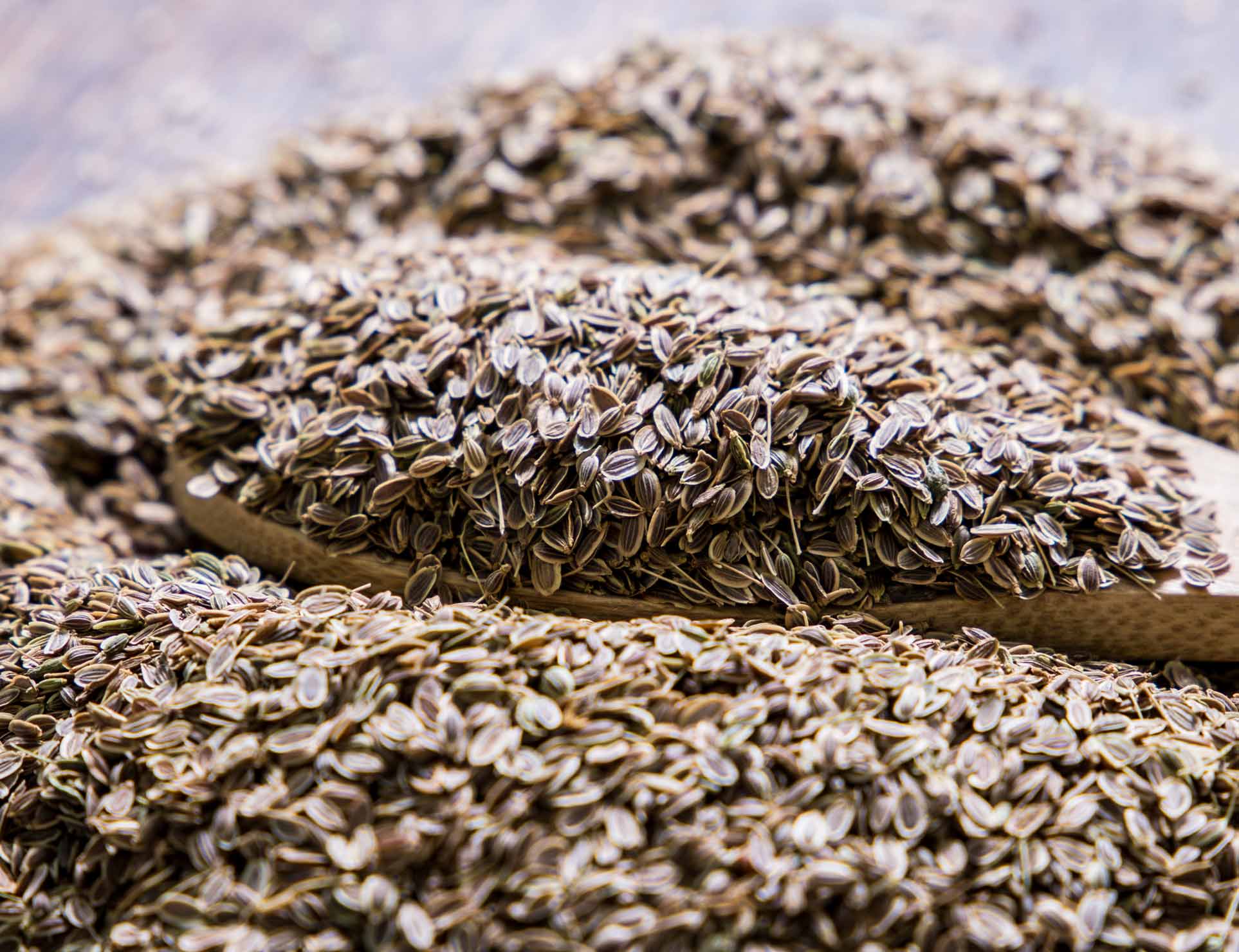Name: dried dill and Dill seeds / dill leaves for germination
Botanical name: Anethum graveolens
Common names: dried Dill leaves, dill weed
Family: Apiaceae
About:
The native habitat of dill (Anethum graveolens) is south, west and central Asia, a short-lived herb that grows throughout the year. Dill is fresh and dried, which is used as a spice of food to give food the good flavor. Dill is distinguished from dill seeds in the Baltic and Central Asia.
What are dill seeds - dill weeds?
Dill weed and dill seeds Herbs are of the identical plant. However, each has a special flavor. Dill seeds have a strong taste; while dill leaves (dill weed) herbs have a mild taste to give good taste quickly in cooking. Cooking should be done in a short time and at low temperature. It is best to add dill herbs once in the dish. The shape of dill seeds is flat and oval. Fresh ones have dark green. Dried dill leaves grass can be used freely dried dill because it does not have high flavor.
Dill seeds are similar to Caraway flavor. But also from fresh or dried herbs, dill herb is used as a food spice. From leaves its extracted Dill oil, Dill stems and also from plant seeds. Seed oil can be used to make soap.
Date of Dill:
His native country goes back to East Europe. In ancient Egyptian tombs, Roman ruins and Neolithic, they found dried dill.
Recently, dill / dill leaves has been the most communal through India and South-east Asia, and its popularity has been fierce with West European chefs for many years. In the US, it was not very communal, but it is now considered the major herb of the food. Dill is native to the south Mediterranean and is now also grown in Poland, UK, north India, Scandinavia, Japan, Turkey, the US and Egypt as well.
Benefits of dill Weeds:
Helps decrease menstrual cramps
Helps lower the rate of depression
Reduce cholesterol
repellent for natural diseases
Treatment of epilepsy
A source of energy and helps digestion through beneficial fatty acids.
Site selection and soil preparation for dill seed plantation:
Dill seeds became better when they grew in full sunlight in a location without strong winds so long plants did not cover it.
The ideal soil for growing dill seeds with little water, which is acidic, with a pH between 5.5 and 6.5. Dill seed germination rates is decrease in clay soil with high sand content or soil with low retention of moisture. In low-lying or poorly-drained soils, building soil forming a plateau or rising plant location helps to efficiently transfer water from the root area.
Seeds of dill germination
Dill / dill leaves (Anethum graveolens) is grown to use its leaves and flavor to make many dishes. seed heads or seeds used in spices, pickles, pastries and other foods. It is best to plant the grass in the location where it will grow because the dill does not grow well.
Sowing Dill Seeds / dill leaves:
Dill seeds are often grown once a year, although the ideal temperature for germination is about 15 to 21 C. Dill seeds are harvested every few weeks for continuous harvesting throughout most of the growing season. Plant dill seeds 7.5 or 10 cm in rows spaced 60 cm because the light encouraged dill germination. We must cover the seeds only with 0.60 cm of soil. Preserving moist soil encourages germination and rapid root growth.
Dill / dill leaves / dill seeds and ancient Egyptians:
The seeds are used as a stalk of the wind
Treatment of some diseases of leg vessels
Anti-scabies
Palliative pain relief
Bandage to soften and soften the shoulder
More related articles:




